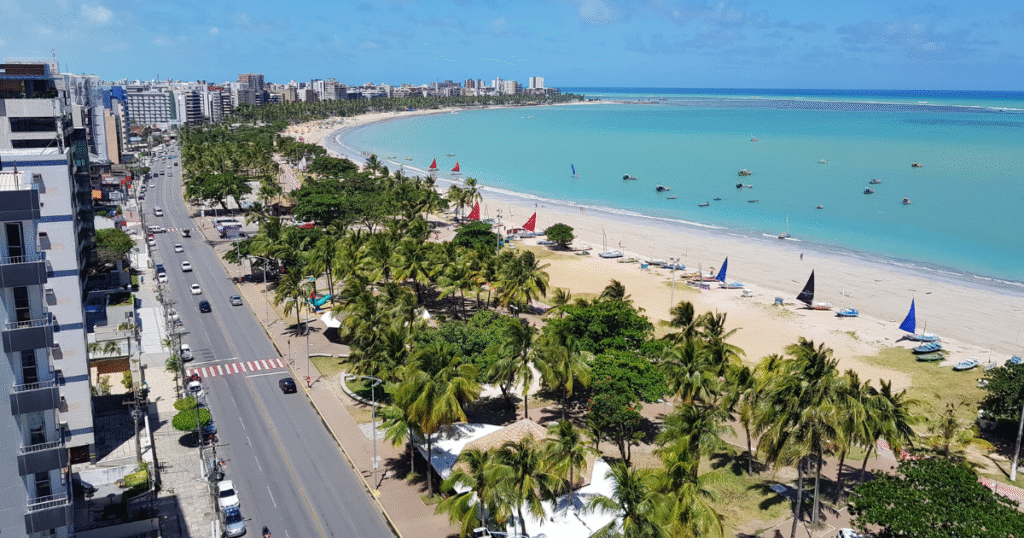When people think of the invention of the airplane, the Wright brothers—Orville and Wilbur—usually come to mind. Their 1903 flight in Kitty Hawk, North Carolina, is often credited as the first successful flight of a powered, controlled, and sustained aircraft. But in Brazil—and even among many aviation enthusiasts around the world—there’s another name that soars just as high: Alberto Santos-Dumont.
So, was Santos-Dumont the true inventor of the airplane? The answer depends on how you define “first flight” and what criteria matter most: public demonstration, independent takeoff, or controlled flight.
Who Was Alberto Santos-Dumont?
Born in Brazil in 1873, Santos-Dumont was a wealthy inventor, engineer, and aviation pioneer. Fascinated by flight from a young age, he moved to France, where he began experimenting with dirigibles (motorized balloons) before shifting his focus to heavier-than-air machines.
Santos-Dumont was not just an inventor; he was a showman. Unlike the Wright brothers, who conducted many of their tests in private, Santos-Dumont believed in transparency and spectacle. He flew in front of crowds, press, and official observers—making sure the world saw each achievement.
The Historic Flight of the 14-Bis
On October 23, 1906, in Paris, Santos-Dumont piloted his 14-bis aircraft in what many consider the first public, verified powered flight of a heavier-than-air machine. The aircraft took off unassisted, flew approximately 60 meters (197 feet) at a height of 2-3 meters, and landed safely.
This was a big deal. The flight was:
-
Fully documented
-
Witnessed by the public and officials
-
Unaided by launch systems like catapults or rails
In contrast, the Wright brothers’ earlier flights were not public, and they used a catapult system to assist takeoff—an important technical distinction for some aviation historians.
Why the Debate Still Exists
The debate over who truly invented the airplane often boils down to criteria and context.
| Criteria | Wright Brothers (1903) | Santos-Dumont (1906) |
|---|---|---|
| First flight | Yes, in private with catapult assistance | No, but public and unassisted |
| Public demonstration | No | Yes |
| Global recognition | Widely recognized internationally | Strong recognition in Brazil and parts of Europe |
| Independent takeoff | No (used catapult) | Yes |
If you believe the true inventor of the airplane must have taken off under their own power in a public setting, Santos-Dumont might deserve the crown. And in Brazil, that’s exactly how many see it—he’s not just a national hero, he’s the father of aviation.
How Santos-Dumont’s Legacy Lives On (And Helps Travelers Today)
Santos-Dumont’s passion for air travel helped pave the way for the global connectivity we enjoy today. Flying internationally used to be a fantasy—now it’s a few clicks away. When I travel, I personally use Trip.com because they offer affordable international flights, easy hotel bookings, and support in multiple languages. Whether I’m flying to Brazil, Europe, or across the U.S., it’s become my go-to platform for stress-free travel.
Managing money abroad? I recommend Remitly for sending USD to Brazil. The fees are lower than traditional banks, and the transfers are fast—perfect if you’re living or traveling abroad and need to support yourself or others.
Security-wise, whenever I use public Wi-Fi at airports or hotels, I always stay protected with NordVPN. It keeps my data private and lets me access content from back home without restrictions.
For digital nomads and expats looking to manage finances more flexibly, I also recommend Crypto.com. Their Visa card is especially useful for purchases abroad with cash-back rewards and no surprise international fees.
A Legacy That Still Soars
Santos-Dumont’s legacy extends beyond the 14-bis. He also developed one of the first personal aircraft (the Demoiselle), and his style and flair made aviation exciting to the public. Tragically, he died in 1932, reportedly heartbroken by the use of aircraft in warfare—something he never intended.
Yet his contributions endure. Airports, streets, and even wristwatches (he inspired Cartier to create one!) bear his name. Whether or not he was the first, there’s no question that Alberto Santos-Dumont helped humanity take to the skies.












